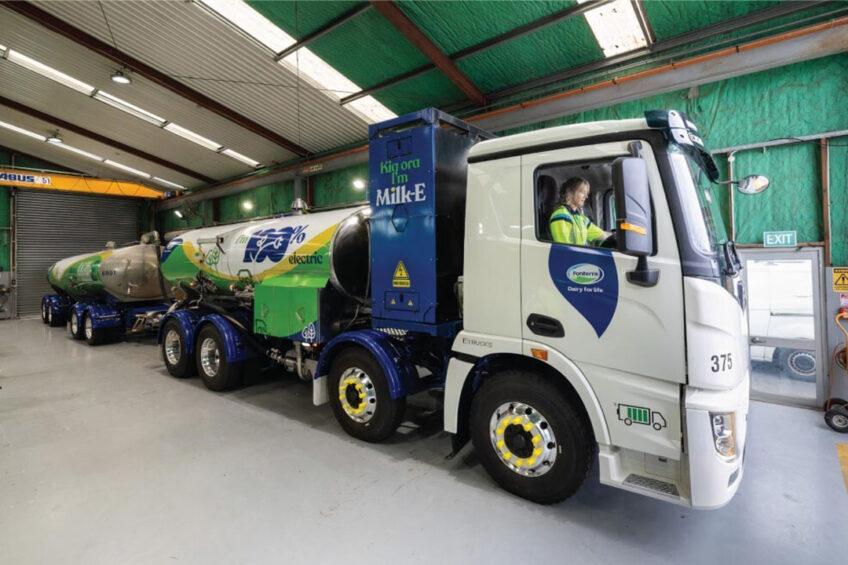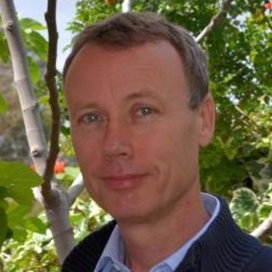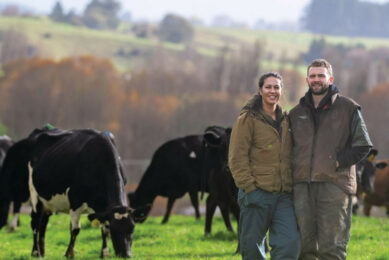Fonterra launches electric milk tanker

Fonterra has launched New Zealand’s first electric milk tanker, the Milk-E. The tanker should support Fonterra’s fleet decarbonisation.
Fonterra says it is the first fully electric milk tanker in New Zealand, and might be the first in the world. “Right across the co-op our teams are constantly looking at how we can decrease our emissions – from on-farm, at our sites and throughout our transport network,” chief operating officer, Fraser Whineray, emphasises. “The global technology investment in sustainable land, air and sea transport is phenomenal.”
The E-tanker is part of Fonterra’s electric vehicle strategy that will see a third of the co-op’s light vehicle fleet converted to EVs by the end of 2023, while also focusing on transitioning medium and heavy vehicles.
The tanker is about the same size as a regular tanker and will operate at 46 tonnes GVM (gross vehicle mass) with the trailer. The cab and chassis are built by XCMG – a Chinese construction machinery group. A Fonterra team has fitted the tank of the tanker to it, which is the same as with Fonterra’s regular tankers.
The tank has the capacity to carry 28,000 litres of milk. However, because the truck is a bit heavier with the battery, it will carry around 2,300 litres of milk less. This way Fonterra can operate it within the permitted weight.
Battery swap system
The tanker takes about 3 hours to charge. It will have a battery swap system, so it can be used continuously. The tanker is based at Fonterra’s Waitoa site, where the trial also will show how a battery system could work within a fleet to minimise downtime from battery charging. The team will be able to swap the battery out in about 6 minutes.
Changes to the battery configuration have given the team an opportunity to trial other additions, to improve milk collection efficiencies, reduce safety concerns, and reduce the amount of work required to customise a Fonterra tanker.
“It’s been great to see the team turn challenges into opportunities, so in addition to trialling the Milk-E’s on-road ability, we’re also trialling a new electric pump, hose configuration and cabinetry,” says Whineray.
An electric pump on the driver’s side has reduced the pipework on the truck by 3.4 metres, reducing tare weight. The need for a hydraulic tank and pump has been removed and a fully electric motor and pump have been installed. The build of the Milk-E took about 36 days. A normal tanker takes about 27 days to build.
Heavy vehicle E-Transport in a rural setting
During the trial Fonterra will be looking at a number of factors including how far it can go, how easy it is to charge, milk collection, maintenance, efficiency, cost, and driver comfort and safety. “This is very much a trial and we’re looking forward to learning more about heavy vehicle e-transport in a rural setting,” Fonterra says.
The tanker is based on Fonterra’s Waitoa plant, because it has lots of close supplying farms on relatively flat land, so the electric tanker can do shorter runs. Battery consumption is reduced because there are fewer hills. Waitoa was also home to the biggest fleet of electric milk trucks 100 years ago.
Fonterra received co-funding from the government’s Low Emissions Transport Fund (LEFT), which is administered by EECA (the Energy Efficiency and Conservation Authority). EECA group manager investment and engagement, Nicki Sutherland, emphasises that New Zealand has ambitious targets to rapidly reduce carbon emissions. “And transport is key,” he says. “But heavy freight has proven hard to decarbonise. If successful, this project could be replicated across a number of New Zealand businesses.”
Join 13,000+ subscribers
Subscribe to our newsletter to stay updated about all the need-to-know content in the dairy sector, two times a week.










